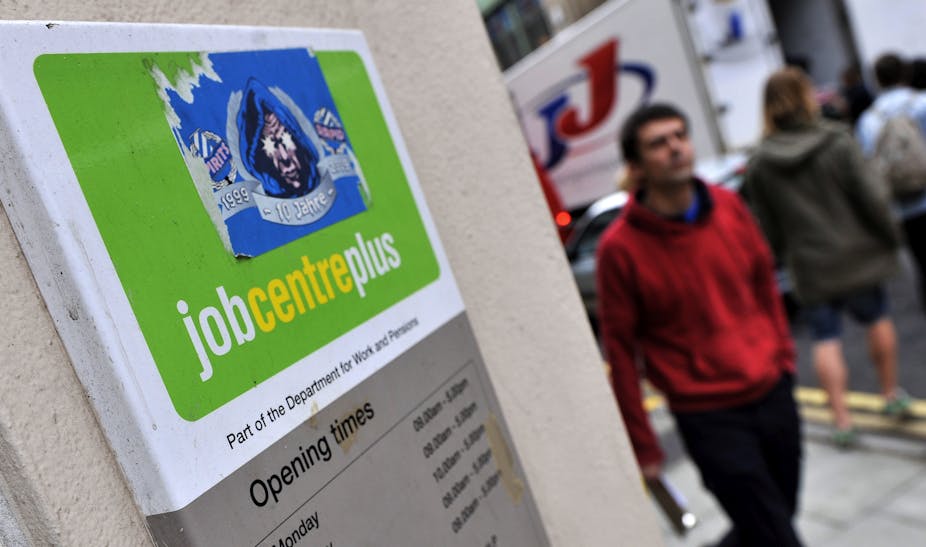Recessions always hit young people hard. Firms’ first response to declining orders is to stop hiring new recruits rather than sacking experienced staff. Young people disproportionately rely on new hiring to secure employment as they move from education into the world of work and seek to move to jobs closer to their career goals.
In the past, young people have benefited from any recovery in jobs and youth unemployment has fallen faster as new vacancies return. Today, this is not happening. Under 25s make up 40% of the UK’s unemployed and have an unemployment rate nearly four times that of older workers. This is among the worst ratio within the Organisation for Economic Co-operation and Development group of countries.

But the strong jobs recovery of the past two years has seen little increase in employment among young people, with just 40,000 of the 1 million jobs created going to the young. The young were hit hardest by the recession, but unlike previous economic recoveries, are not benefiting most from the recovery.

The coalition government’s policy response to youth unemployment is coherent and has had some limited success, but overall it remains poorly co-ordinated on the ground and lacking in scale to address the issue.
Compulsory participation
The response falls into three broad areas. The first is to encourage young people to extend participation in education or training. The central component here has been to raise the compulsory participation age for some form of education or training from 16 to 17 in 2013, with a further rise to 18 planned for 2015.
In the latest data for the new academic year, the proportion of 16 and 17-year-olds who are not in education, employment or training, the so called NEETs, has fallen to just 4.5%, a major improvement on the picture before the financial crisis.
So far, however, this has not led to improved transitions into work and reduced unemployment among those aged 18 to 24. It is delaying the onset of unemployment but not smoothing the transition into work. The closely related attempt to increase the number of apprenticeships for those under 20 has so far failed to get off the ground, but there has been some increase for older age groups.

Starting young
The second policy response is to try to accelerate the recruitment of young people by employers. Here the government offers firms a £2,275 subsidy to take on young people who have been unemployed for more then six months. Take-up has been dismal and the government is now proposing to replace this scheme by abolishing all employers’ national insurance contributions for under-21 year olds.
The focus on the youngest, here, seeks to improve early transitions into work and thus should improve employability as they grow older. This change will come in in April 2015.
The government’s welfare flagship Work Programme, which offers support services to job seekers by providers who are only paid for positive job outcomes, has achieved just 74,000 job entries for young people over three years. This is not a complete disaster; just inadequate given the size of the challenge.
Work experience
The third element has been to offer valuable work experience to those struggling to make quick transitions from education to employment. The coalition abolished Labour’s Future Jobs Fund before any evaluation had been carried out. The programme offered 18 to 24-year-olds who were out of work a paid work experienced placement for six months, with the wages met by the government.
Mostly the placements were offered by charities who bid to offer places in terms of the quality of the experience the young person gained. Yet the evaluation, when it emerged later, showed the programme raised employment by nine percentage points, when compared to those slightly older unemployed people who were eligible.
The government has introduced a shorter, unpaid and hence lower-cost work experience programme for people who have been out of work for three months. This too appears to raise job entry, but not by enough to make a serious impact on youth unemployment.
But these programmes do prove that work experience, especially those that provide high-quality placements, can make a difference to young people’s employment. The deputy prime minister Nick Clegg indicated in a recent speech that the government was again looking a more intensive work experience programme for those young heading toward long-term unemployment.
Work experience works
Raising the participation age and offering work experience have proven themselves to work, but overall the policy response to youth unemployment has not made serious inroads into the huge population of the young unemployed.
There are a large array of agencies that have some engagement with young people after they turn 16: schools, further education colleges, local authorities, charities, some of which are funded by government some not, as well as national government agencies like National Apprenticeship Service and Job Centre Plus. There have also been various employer-focused bodies set up like Local Employment Partnerships.
Some major cities are trying to build a coherence to this multitude of players, which is sadly lacking on a nation level. There is substantial funding within this system, so it feels that much could be done to improve things within existing budgets. But at the same time, re-building the work experience element of the policy response is essential to addressing long-term youth unemployment.
Nick Clegg is hinting that the government plans to do more, and Labour has more developed plans. Meanwhile Britain’s young people are still waiting for the slow train to arrive.
Hard Evidence is a series of articles in which academics use research evidence to tackle the trickiest public policy questions.

